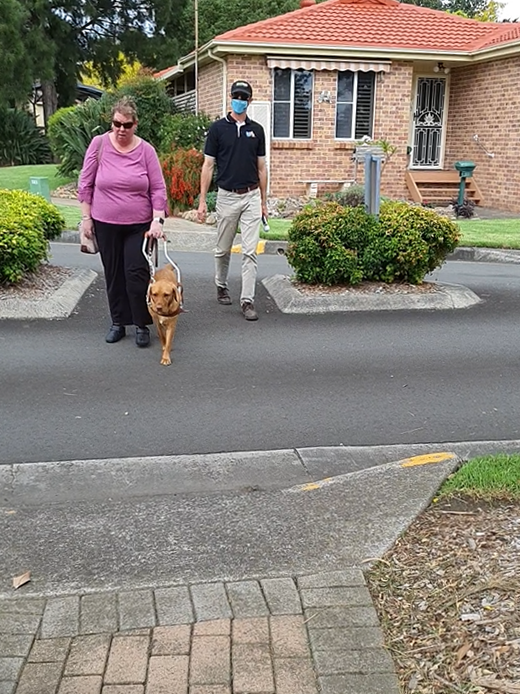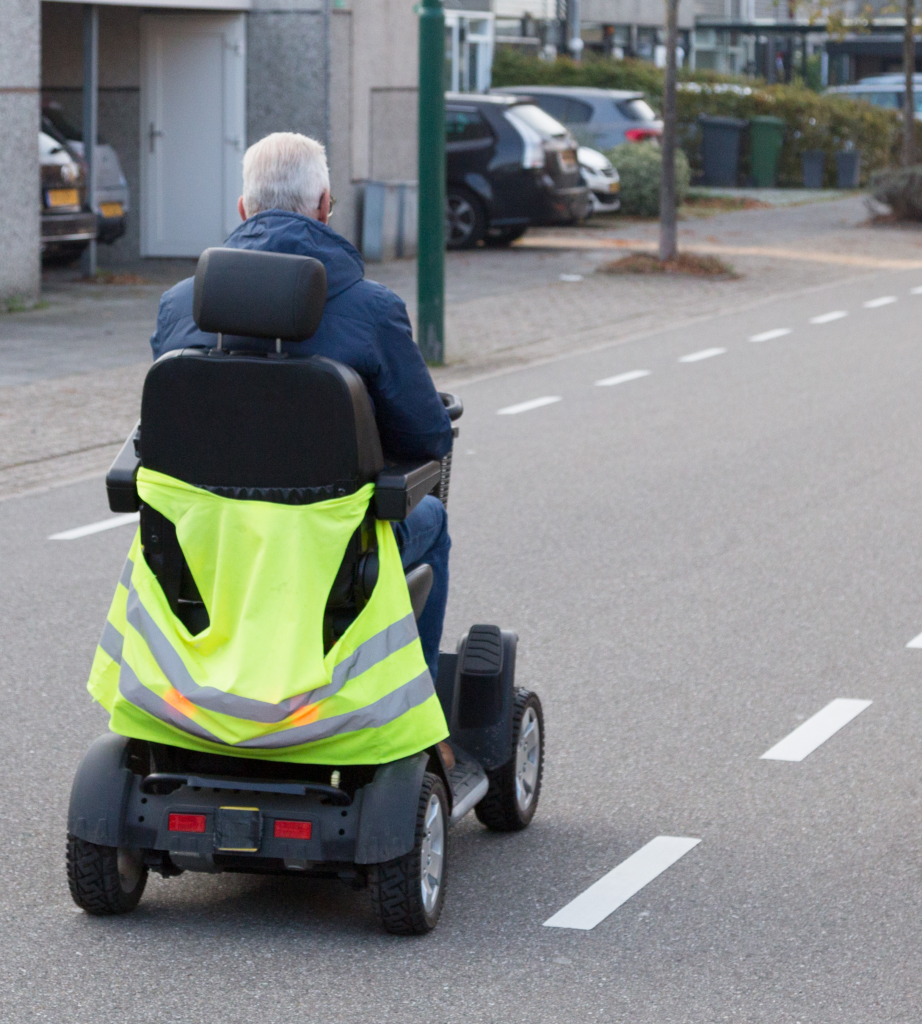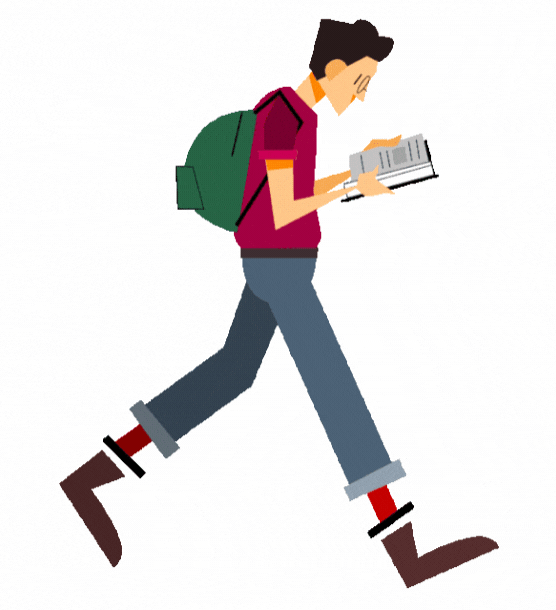
Pedestrian Safety
Each year, around 50 pedestrians are killed
and over 1000 are hospitalised on NSW roads.
Crossing the Road
Walking on a footpath can be dangerous as there are many things to be aware of including other people, cars, driveways, bikes and uneven surfaces.
Everyone is a pedestrian and share pathways to get to transport, their home, friends place, work, park, shopping or other outings.
There is also a danger to pedestrians who have a disability with the potential reduced mobility, vision, or hearing that comes from a disability. Plus, some people do not understand distance very well.
Know how to cross a road safety
- Reduce risks as much as possible – Look Out when Traffic is About
- Look left, right and left when crossing the road
- Where possible, use a pedestrian crossing or traffic lights
- Always look for cars and make eye contact, if possible, with the driver when crossing the road
- Do not assume a driver or cyclist will stop for you or see you
- Wear bright clothing so people can see you
- Obey road signals at lights
- Wheelchairs are considered pedestrians and as such are required to follow laws set to protect pedestrians. E.g., follow walk/don’t walk signs when crossing the street.
- Do not cross if you do not have a green “walk” sign.

Vision Impairment
For people with reduced vision, street clues are important in keeping pedestrians out of the road. Signals for those with limited vision include pathway braille, traffic noise and particular sounds.
Some traffic lights beep to let people who are visually impaired know when it is safe to cross the street. Slopes in streets also give clues.
Vision Australia and Guide Dogs Victoria have developed the following information to improve your safety and help raise your confidence when walking around the streets.
I might not see you, but you can always see me [MP4 199Mb]
Tips for people who are blind or have low vision [DOCX 376 Kb]
Tips for people who are blind or have low vision [PDF 989 Kb]

Physical Impairment
Use appropriate kerbs to cross the street. Kerbs, steps, and stairways are barriers that confront someone who uses a wheelchair or scooter. Try to find a way around them by using kerb cuts, ramps or elevators.
Plan your route that is level and has access to a footpath the entire time.
Watch out for cars in driveways and be prepared to stop for pedestrians.
Motorised Wheelchairs
- do not need to be registered in NSW
- do not require third party insurance
- Users do not need a licence
- Users are generally considered to be pedestrians
- Should not exceed 10km/hr
- Obey pedestrian road rules
- Are discouraged from using bicycle lanes

Intellectual Disabilities including Autism
Road safety involves processing different information. This may cause anxiety and sensory overload so the person may not be able to think clearly to make safe decisions about crossing the road.
A person who does not understand verbal information easily, may not respond to the adult’s instruction to “Stop” or “Wait” at the side of a road because he/she does not understand the instruction.
Individuals who are sensitive to sensory input or noise, may feel overcome by the large amounts of things happening around them on the road such as traffic noise, smells, people walking close to them. Pedestrians with intellectual disabilities can wear ear defenders or headphones to reduce anxiety caused by noisy traffic and unpredictable road noises. But they will not hear a car coming behind them or a car horn.
People may be distracted by something that makes them not take notice when crossing a road or walking.
People with autism may be impulsive and may not think about the traffic before running across the road to see something.

Ed's Story
Ed was going on a day out with his friends to Luna Park. He was excited. His carer dropped him off on the other side of the road near the bus stop. When she was getting his bag and locking the car, Ed saw his friends and ran across the road. He did not look at the traffic and it was too late for one of the cars to stop.
Ed was hit and broke his leg. Ed was non-verbal so could not tell the people around him his pain. One of the supervisors from the trip stayed with him and chatted with him, showing him his favourite video on his phone to calm him down and distract him until ambulance and police were called and took him to hospital.
His carer was very upset.
His friends saw the accident.
His parents were distraught.
The driver was stressed and worried for Ed.
Accidents affect many people.

Using Communication Boards
Teach children early about road safety rules in a visual form using photos, symbols or words and talk about different things that might happen on the road and what they should do.
For children and even adults with aphasia, autism or cognitive impairment it may be helpful to use a communication board. The use of pictures or symbols can be a way for them to learn about road safety. It may also be helpful to keep a communication board handy in their backpack when travelling in case they want to communicate.

Give Way to Pedestrians
More Tips for Pedestrians
Railroad crossings
Railroad crossings can be dangerous for pedestrians using wheelchairs or who are hearing impaired as they cannot hear the warning bells.
Take care at these crossings and always check if a train is coming.
If there is nothing coming and no red signal, you can go across the crossing.
Plan your journey
Use a pathway that will allow you to use the sidewalk for the entire trip.
If you are using a mobility scooter, a wheelchair, or a walker, plan your journey in advance so you can choose the safest way and that it is accessible or if you need someone along to come and help you.
Driveways
Always look out at driveways in case a car is coming out.
Cars in driveways may not see you when they are reversing or entering.
Distance
Sometimes a car might look further away than it is, or it might be going faster than you think.
If you are unsure about crossing the road with the car, wait until you feel safe.
Using Headphones or Texting while Walking
Using the phone while walking will lead to an accident.
If you need to use a phone, get off the pathway or road and stop in a safe place and then use it.
Do not walk and text.

© 2021 An initiative of the Flagstaff Group. Funded by Transport for NSW.
ABN 53 000 551 575 | Charity Number CFN11129


